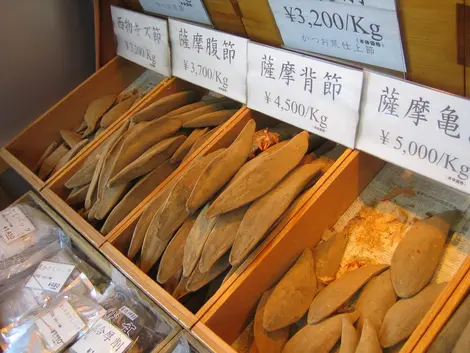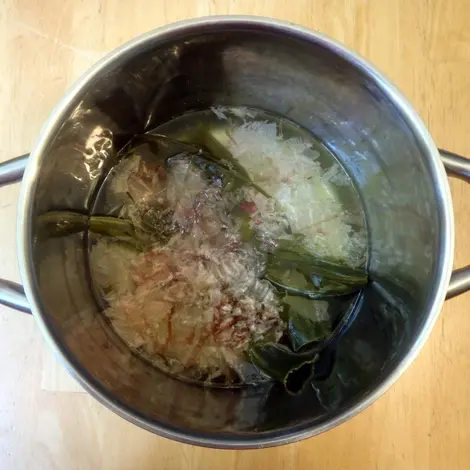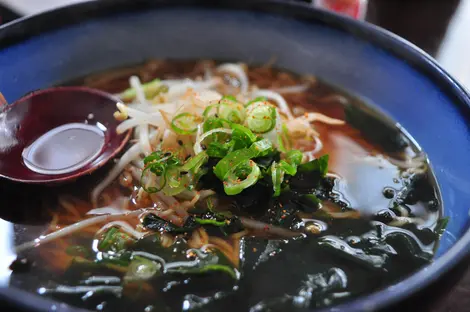Dashi 出汁
A bowl of umami
Dashi is the basis of Japanese cuisine and is used in many dishes, such as miso soup, ramen broth, okonomiyaki, and Japanese pickles.
Dashi is a seaweed and fish broth used in Japanese cuisine.
Homemade dashi
Traditionally, dashi is made from kombu seaweed and katsuoboshi, dried bonito fish flakes. Dashi isn't just used for miso soups or ramen broths; it's also found in many typical dishes such as okonomiyaki (Japanese cabbage pancake), nishime (stewed vegetables) or takoyaki (octopus stuffed dumplings).
Unlike Western broths that often require the use of a plethora of ingredients cooked for as long as possible, dashi is easier and quicker to prepare. The secret of a tasty dashi is to let the kombu seaweed infuse into the water for a minimum of three hours (let it sit overnight for even more taste).
To read: Japanese seaweed
Then the seaweed and its water are heated in a saucepan, but removed just before the water boils. This is a crucial step as overcooked kombu can make the broth bitter. To perfect the broth, katsuoboshi is infused in the hot water, then the water is filtered to keep only the broth.
Umami, the secret of dashi
Dashi is full of of umami, the fifth taste, identified in 1908 by Professor Kikunae Ikeda (1864-1936). Indeed, kombu is rich in L-glutamate and inosinate bonito, amino acids that feature in the composition of umami.
Read also: Nori
Literally meaning "delicious taste", umami is a taste that's savory and lingers in the mouth. Like any flavor, it enhances the taste of food and especially balances all the flavors. Dashi is therefore an essential element for a successful Japanese dish!
Different types
Many types of dashi exist according to the chef's desires. As the name suggests, shiitake dashi is prepared only with dried shiitake mushrooms. This broth is ideal for vegetarian cooking.
Read: Vegetarian in Japan
To make it more tasty, it is possible to add kombu seaweed to it, then it's called shojin dashi. For fish lovers, niboshi dashi is a variant of dashi similar to katsuoboshi. Here, it is not tuna that's used but dried sardines.
Whatever the type of dashi used, know that all the ingredients used for the preparation of the dashi reveal the umami taste. A basic element to give all your dishes a true Japanese flavor.
Discover also: Tsukemono, pickled vegetables



















